Hydrangeas are a Southern garden staple so universally loved that no one dares question even a single cluster of baby-blue blooms, even if they’re merely there to flank your trash cans. Hydrangeas are just a non-negotiable—unless of course, you’re ready to venture outside the cluster of baby-blue blooms. There lies a whole host of other flowering shrubs and plants out there that can fill your garden with all the color and curb appeal you could dream of, with space to spare for a bush or two of hydrangeas if you still so please.
We’ve got suggestions that include classic show-stoppers like the pink lady, azalea, and intoxicatingly fragrant gardenia, along with other options that look like a million bucks on your lawn. Keep your hydrangeas and add these 15 flowering shrubs to your Southern garden for the ultimate explosion of color.
Azalea
One of the South’s favorite shrubs, azaleas offer some of the best curb appeal potential of all these flowering staples, which is why you’ll see so many blooming in Southern gardens from spring to fall, depending on the variety. When choosing the best spot to plant, know that azaleas like plenty of morning light, but you might want to avoid areas that get midday or hot afternoon full sun. When planting in masses, use the same selection in the same hue for maximum impact. Azaleas range in size depending on the variety—make sure to check maturity size and spacing requirements before planting to prevent large selections, like Southern Indian hybrids that can grow up to 8- to 10-feet tall, overtaking a sizable section of your landscape.
Botanical Name: Rhododendron spp.
Sun Exposure: Filtered sun, Part sun
Soil Type: Light, Well-draining
See more easy-to-follow tips on how to pick and grow the best azaleas.
Gardenia
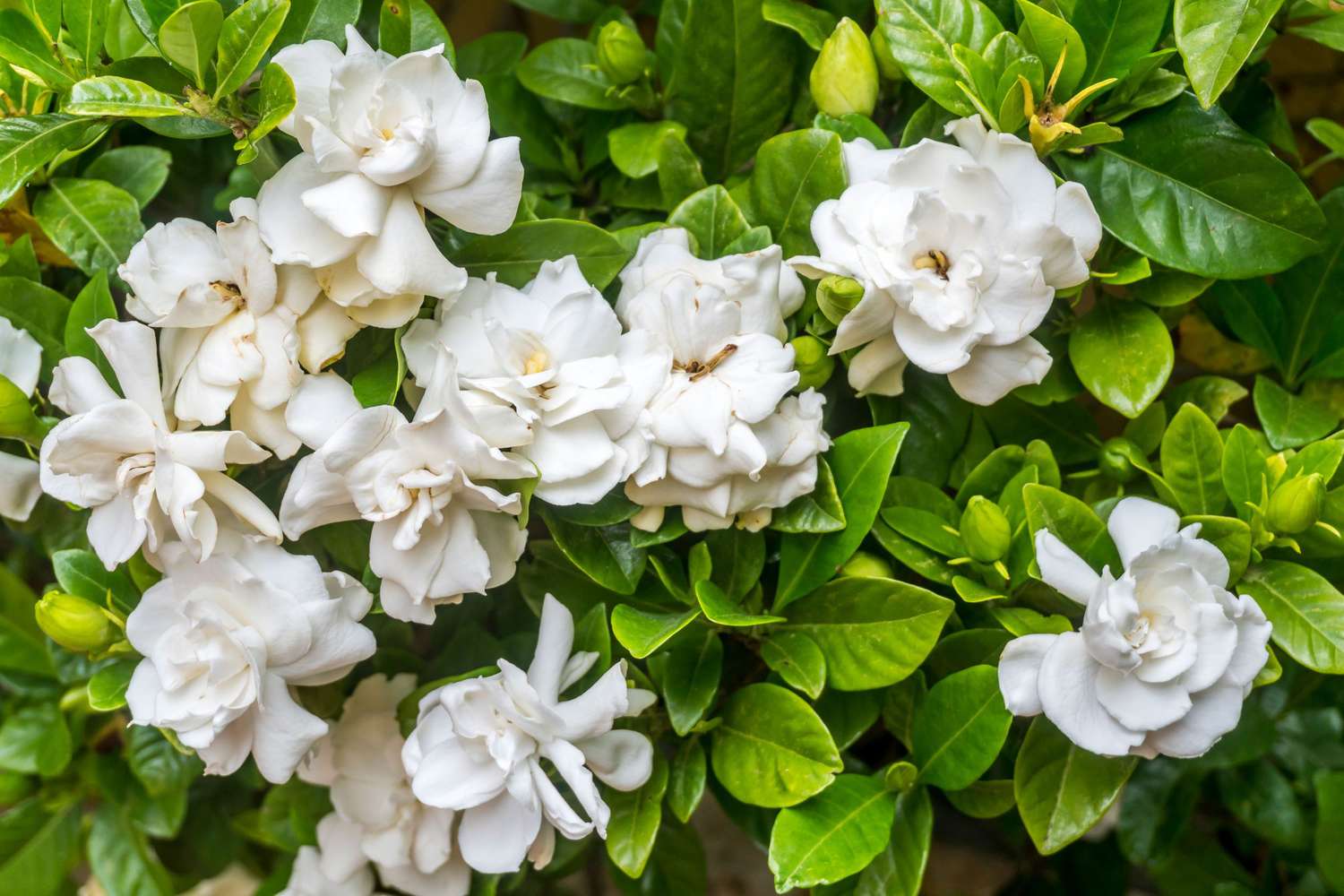
This tender white flowering shrub makes any garden look classic and timeless. Not to mention, it boasts some hard-to-resist attributes: beautiful evergreen leaves, snow-white blossoms, an intoxicating fragrance, and the ability to withstand the Southern summer heat. Gardenias bloom in spring and summer and individual flowers can last several weeks in bloom. Plant gardenias where they can get 4 to 6 hours of sunlight—in warmer climates, they’ll prefer morning to mid-way sun with afternoon shade, in cooler climates, they can grow in full sun. These tropical evergreen shrubs grow in USDA Zones 8-11 but there are now many varieties tolerant to cooler temperatures that can be grown in Zone 7, such as «Kleim’s Hardy» and «Frostproof».
Botanical Name: Gardenia jasminoides
Sun Exposure: Full sun, Part sun
Soil Type: Organically-rich, Well-Draining, Loamy, Moist
See our complete guide to growing gardenias.
Rhododendron
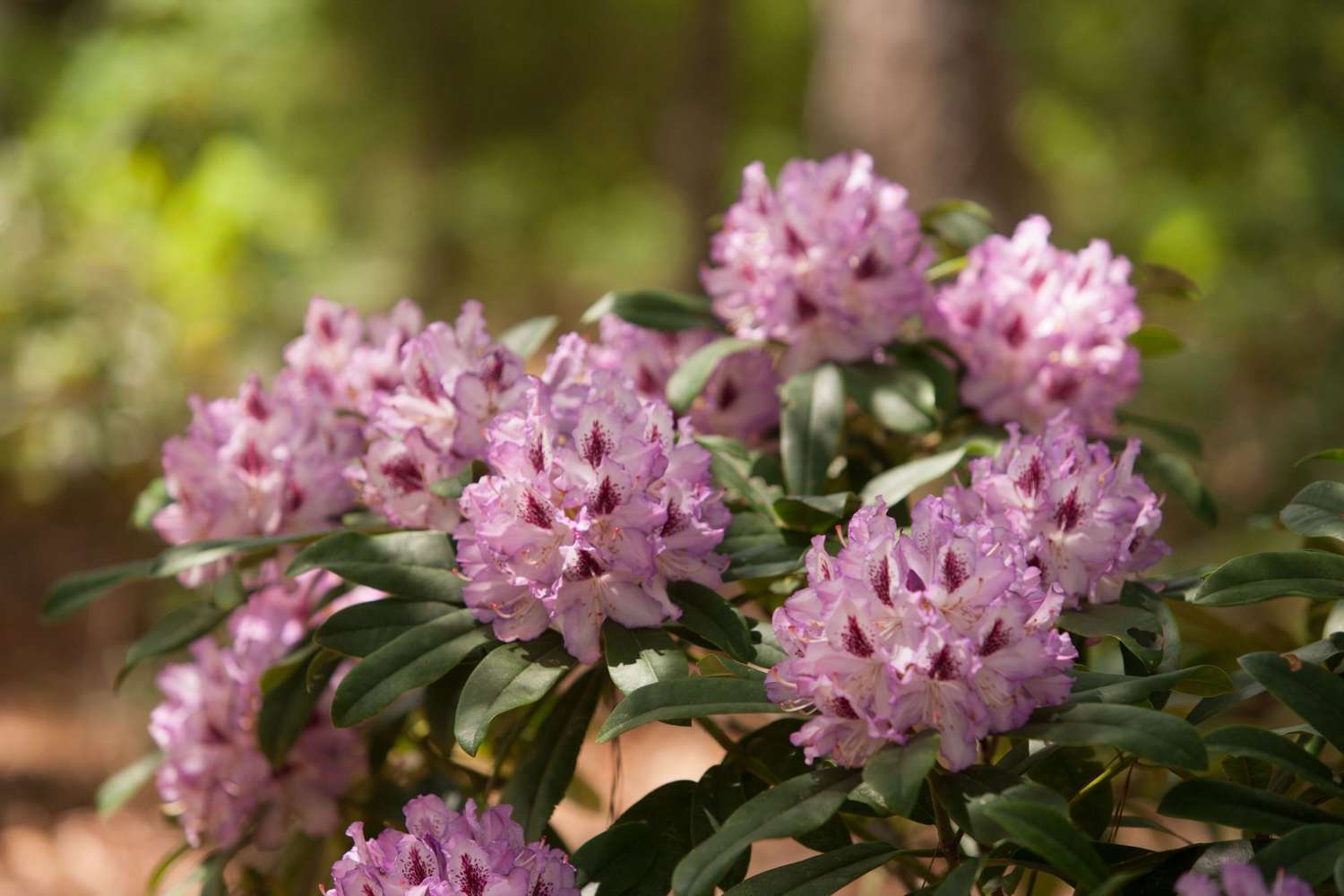
Big-flowered rhododendrons are a beauty to behold, especially considering you don’t see them nearly as often as other classics like hydrangeas. Why? Because sadly, they are more finicky to grow in the South. (Experienced gardeners will like the challenge.) If you take the chance, you might just have the showiest shrubs on the whole street. Rhododendrons needs dappled light to light shade and well-draining, moist, acidic soil that’s organically-rich, but the biggest challenge is that they don’t like heat. For Southern gardens, there are some heat-tolerant selections that can grow in USDA Zone 8 such as «Album Elegans», «Anna Rose Whitney», «Caroline», «Chionoides», «Lee’s Dark Purple», «Nova Zembla», «Roseum Elegans», «Vulcan», and the Southgate hybrid series.
Botanical Name: Rhododendron spp.
Sun Exposure: Dappled sun, Light Shade
Soil Type: Acidic, Well draining, Organically-rich
See Grumpy the Gardener’s best tips for growing rhododendrons in the South.
Hibiscus

Add a healthy dose of the tropics to your garden with these funnel-shaped blossoms. Hibiscus likes a lot of sun and water, which makes it a great option if you’re looking to add a new container plant to your collection that you can move around freely and keep moist throughout growing season. Hot tip: Perennial hibiscus makes the better pick to grow as a shrub, while tropical is a showy option for containers. Hibiscus come in a wide range of colors including, red, orange, pink, yellow, and white. Hot tip: Perennial hibiscus makes the better pick to grow as a shrub, while tropical is a showy option for containers.
Botanical Name: Hibiscus moscheutos
Sun Exposure: Full sun
Soil Type: Well draining, Moist
Camellia
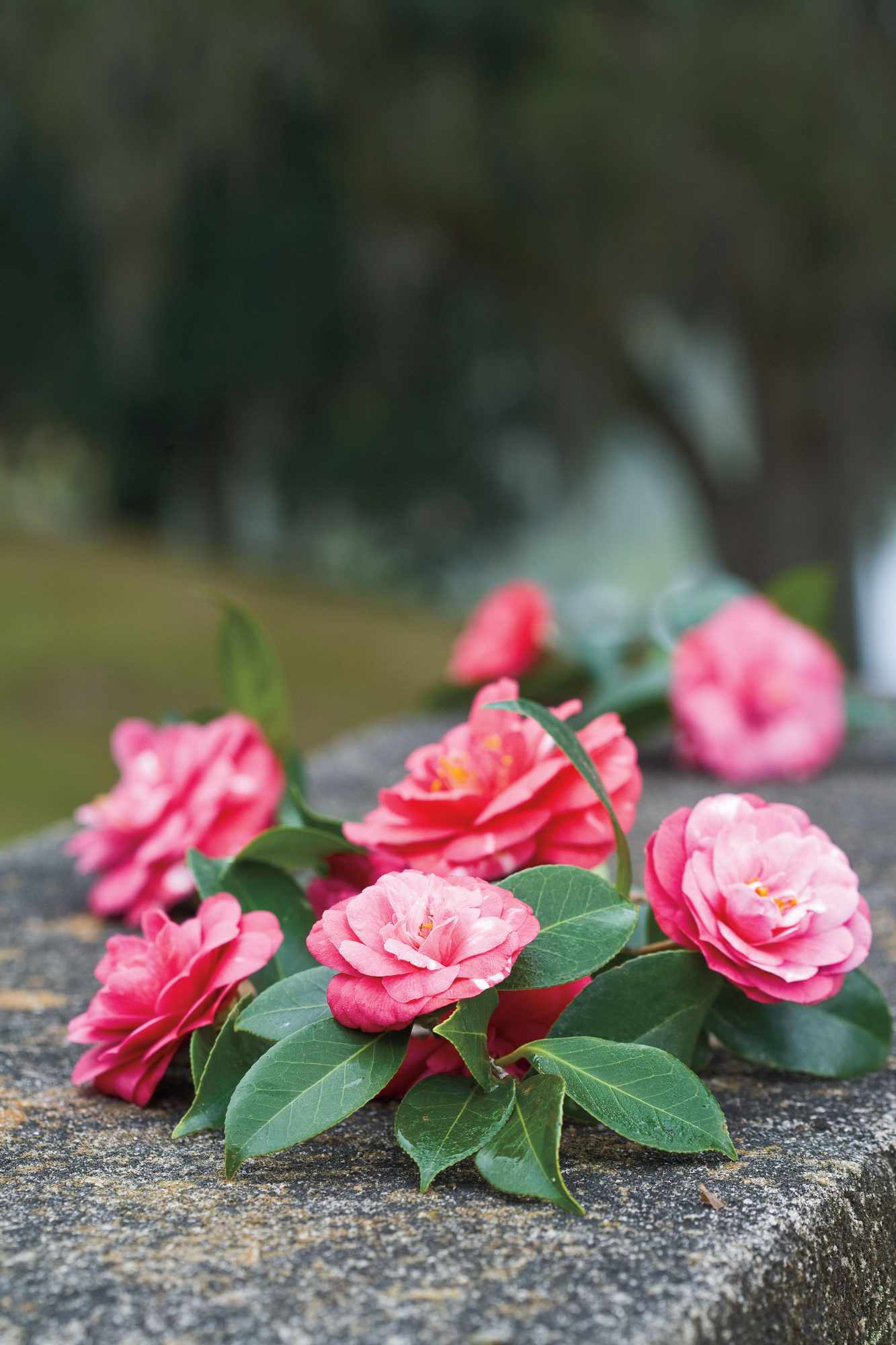
This classic flower has a long blooming season and loves the climate down here in the South. We are in the heart of camellia country, after all, not the other way around! In general, camellias grow and bloom better in partial shade, with shelter from hot afternoon sun. The reward is a table-worthy display of pink and white blossoms.
Botanical Name: Camellia spp.
Sun Exposure: Part sun, Full shade
Soil Type: Organically rich, Well draining
See our complete guide on how to grow camellias.
Cotton Rose
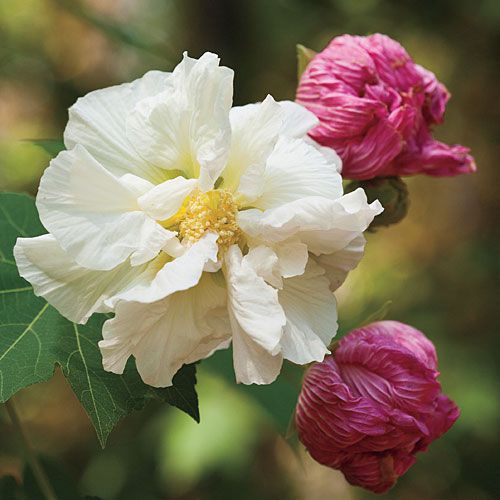
These eye-catching blooms—4 to 6 inches wide—appear in autumn and initially bloom in white, fade to pink as they age, and eventually turn red. One plant, three colors. And who said you needed to pick! To grow, you can sow seeds in spring, but the easiest way to propagate it is to simply root cuttings in water. Easy-peasy.
Botanical Name: Hibiscus mutabilis
Sun Exposure: Full Sun
Soil Type: Moist, Fertile
Learn more about growing and caring for cotton rose.
Peony
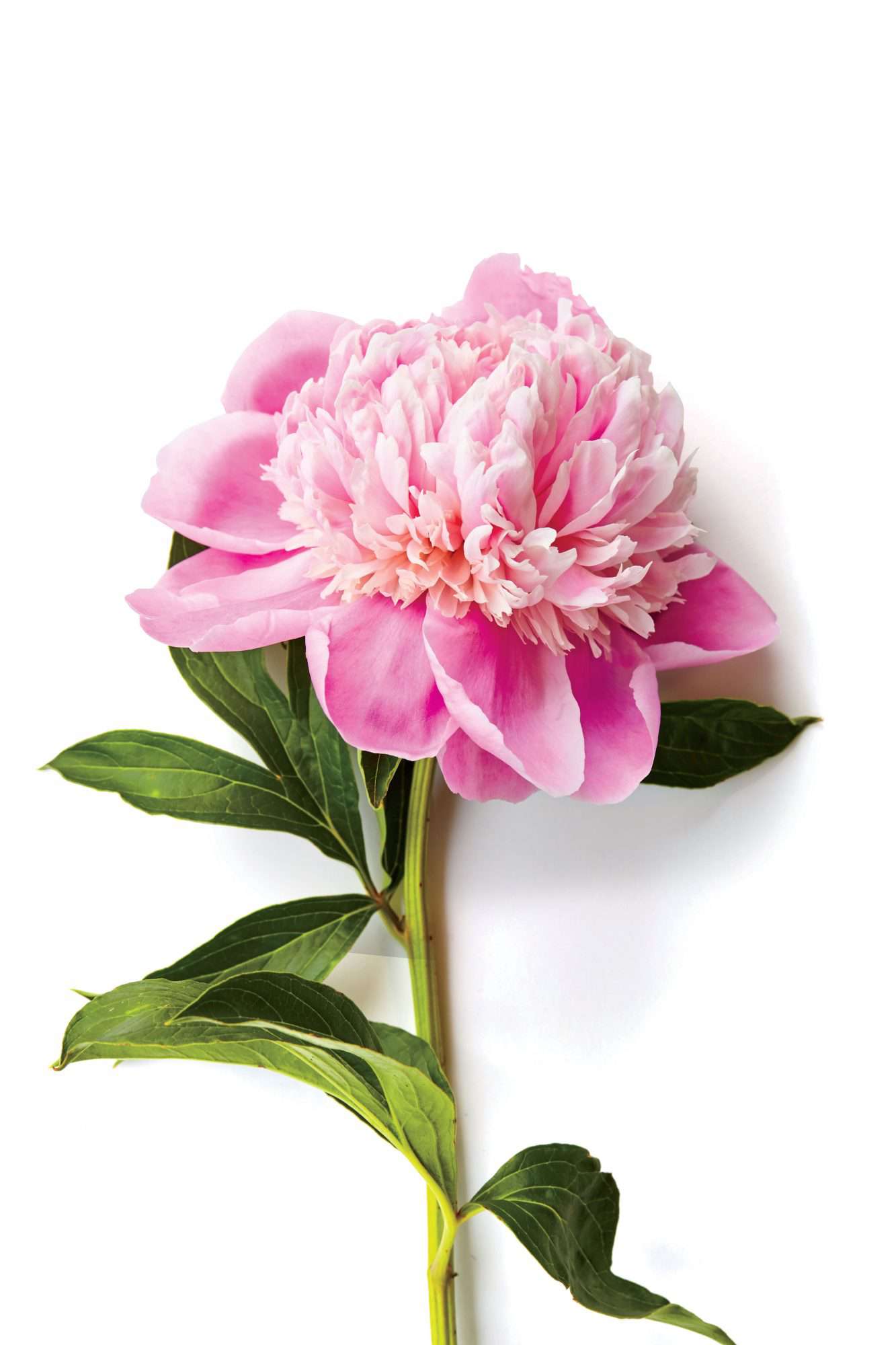
You’ll be hard-pressed to find a prettier flower than peonies. Coming in all sorts of colors and types (both herbaceous perennials and more bushy shrubs), find the best one to fit into your garden and fill your vases with our handy guide to peonies. Peonies fragrant flowers come in red, pink, orange, yellow, purple, and white. Some of our favorite varieties to grow in the South include «Festive Maxima», «Coral Charm», «Kansas», «Sarah Bernhardt», «Bartzella», «Rimpo», «Elsa Sass», and «Nippon Beauty».
Botanical Name: Paeonia lactiflora
Sun Exposure: Full
Soil Type: Well draining, Rich
Weigela
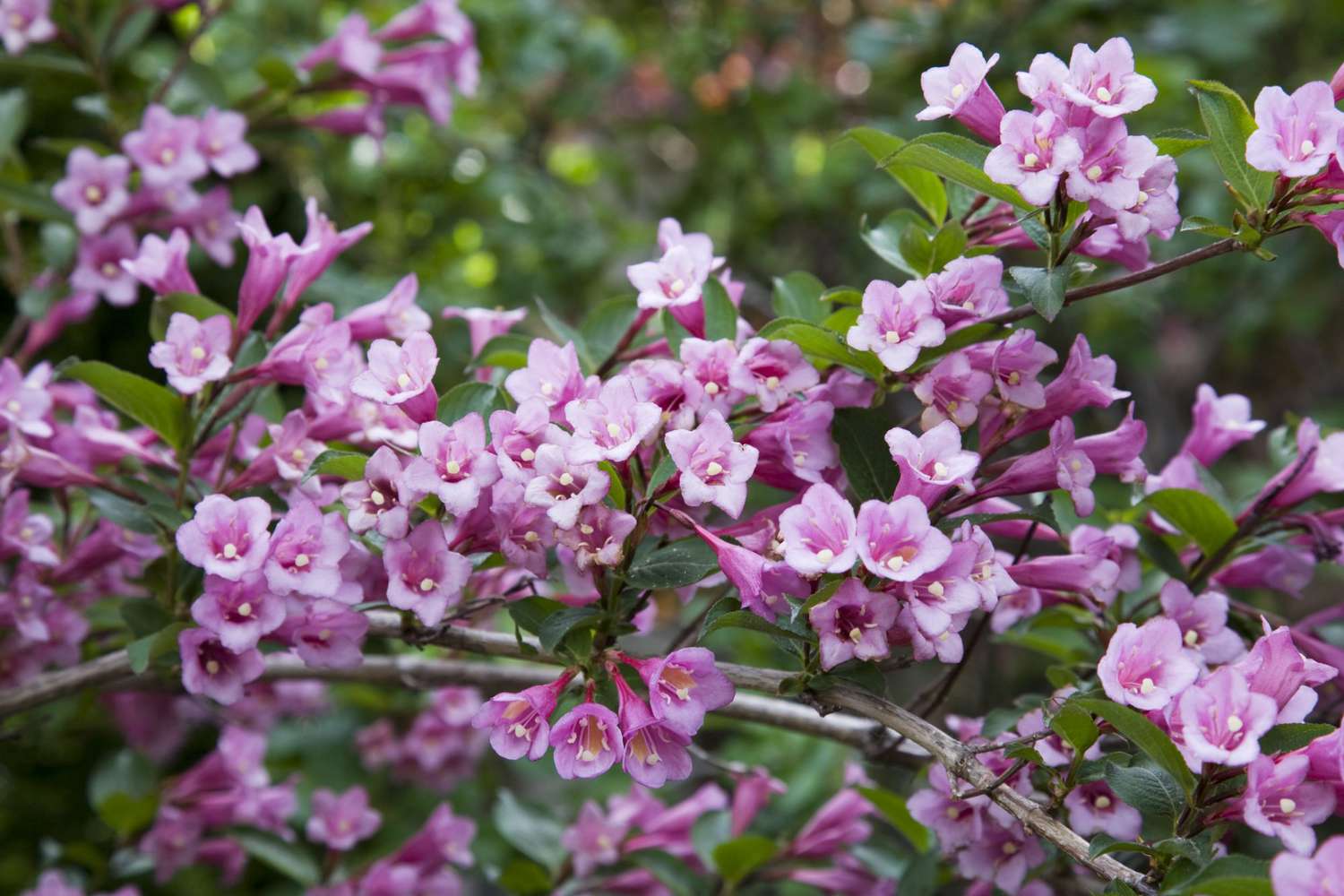
Weigela has experienced a renaissance of sorts in the past decade, going from a ho-hum one-season wonder to a colorfully diverse repeat bloomer. It makes for a great ground shrub speckled with tiny blooms to fill any flowerbed you have lying around that needs some personality. This low maintenance shrub grows 3- to 6-feet high and wide and blooms in late spring and early summer. Weigela comes in a variety of flower and foliage colors. Flowers come in pink, red, white, or yellow hues and foliage can range from variegated in yellow and green to a deep burgundy.
Botanical Name: Weigela spp.
Sun Exposure: Full sun, Part shade
Soil Type: Well draining, Organically-rich
Spider Flower

The open, fluffy clusters of delicate blooms is what makes the spider flower (also known as cleome) a favorite among gardeners who want an easy-care annual that blooms in pink, purple, white, and lavender during the summertime. Spider flower blooms from early summer through the first frost, and grows 1½- to 5-feet high with a 1- to 2-feet spread. Many choose to plant a cluster of cleomes in mass, which makes it look and feel just like a blooming shrub.
Botanical Name: Cleome hassleriana, C. pungens, C. spinosa
Sun Exposure: Full sun, Light shade
Soil Type: Well draining, Average
Hybrid Tea Rose
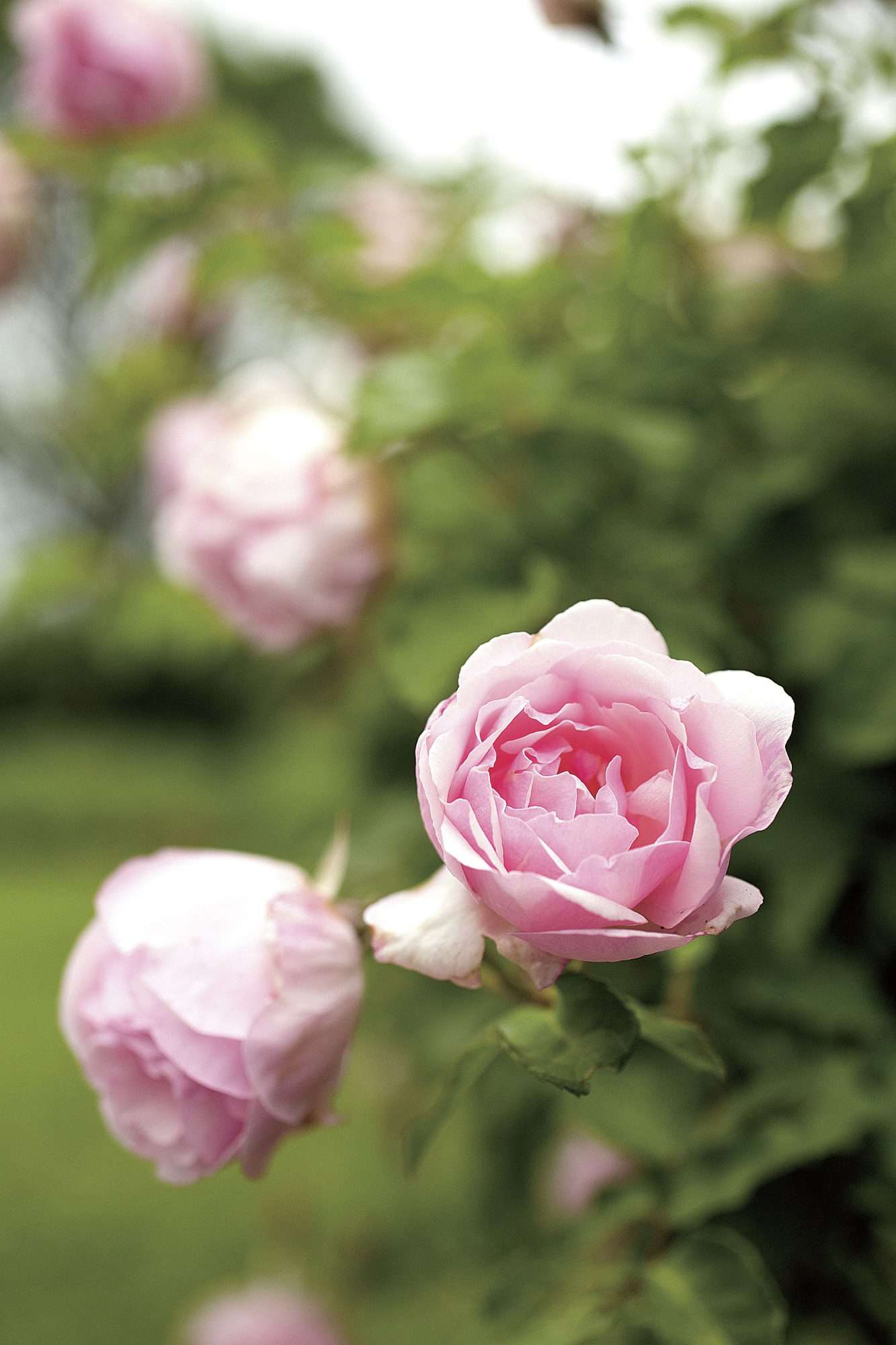
There is a misconception out there that roses are hard to grow—fickle, you could say. That’s a whole bunch of bologna if you just pick correctly and give them a little TLC. Old Garden Roses, for example, are tough as nails and bloom like crazy. The tea rose shown here, «Duchesse de Brabant» Rose, is an heirloom variety from Texas that boasts a fragrant scent and pretty pink petals.
Botanical Name: Rosa hybrida
Sun Exposure: Full sun
Soil Type: Loamy, Well draining
Abelia
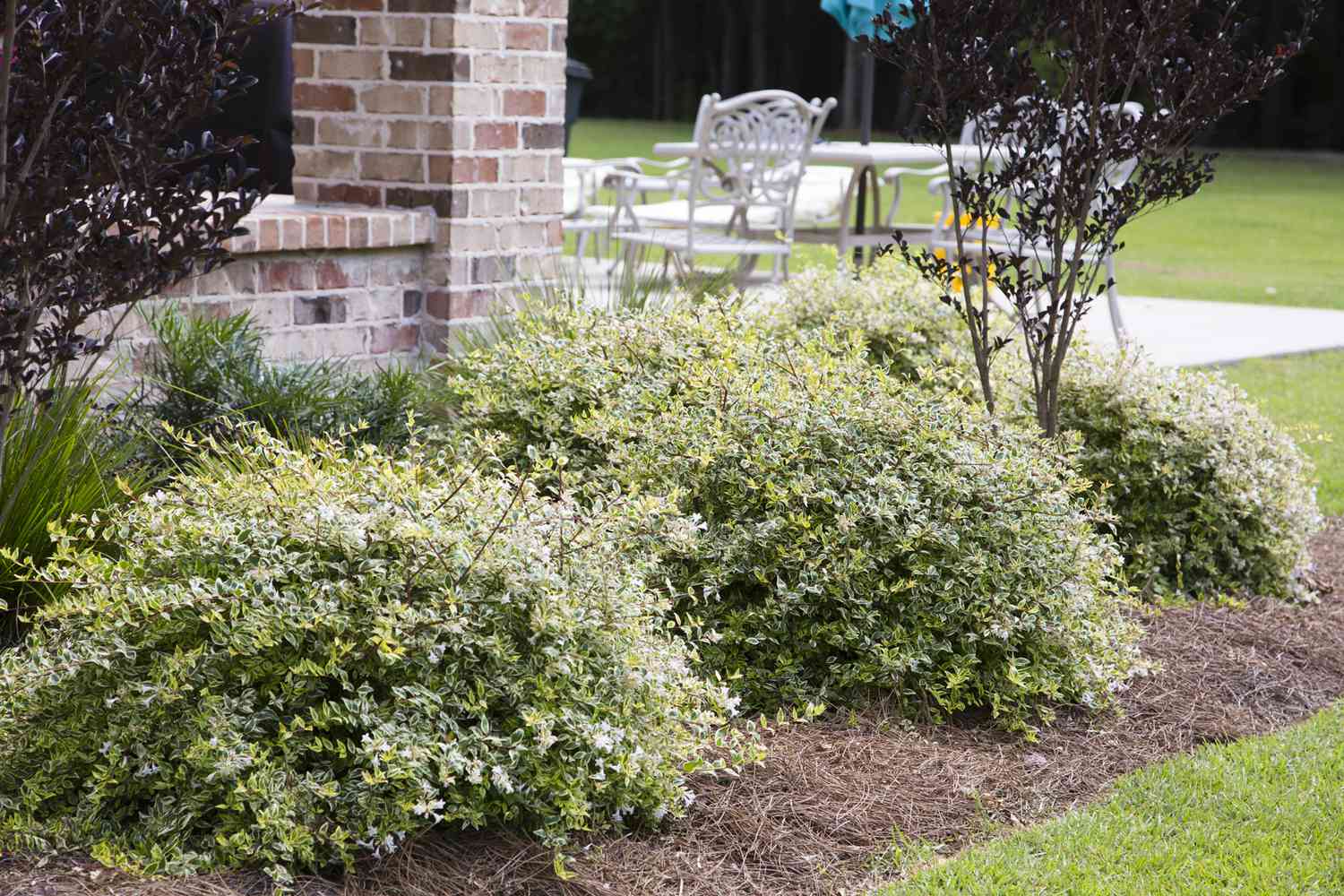
A southern favorite, abelia is a hearty and reliable shrub that grows in full sun with regular water. Abelia attracts butterflies and blooms spring through fall. Blooms of this easy-to-grow shrub come in pink, purple, red, and white. Abelias grow densely and can be planted as foundation plants as well as a border, hedge, or privacy screen.
Botanical Name: Abelia spp.
Sun Exposure: Full sun, Part shade
Soil Type: Slight acidic, Organically-rich, Well draining, Moist
Viburnum
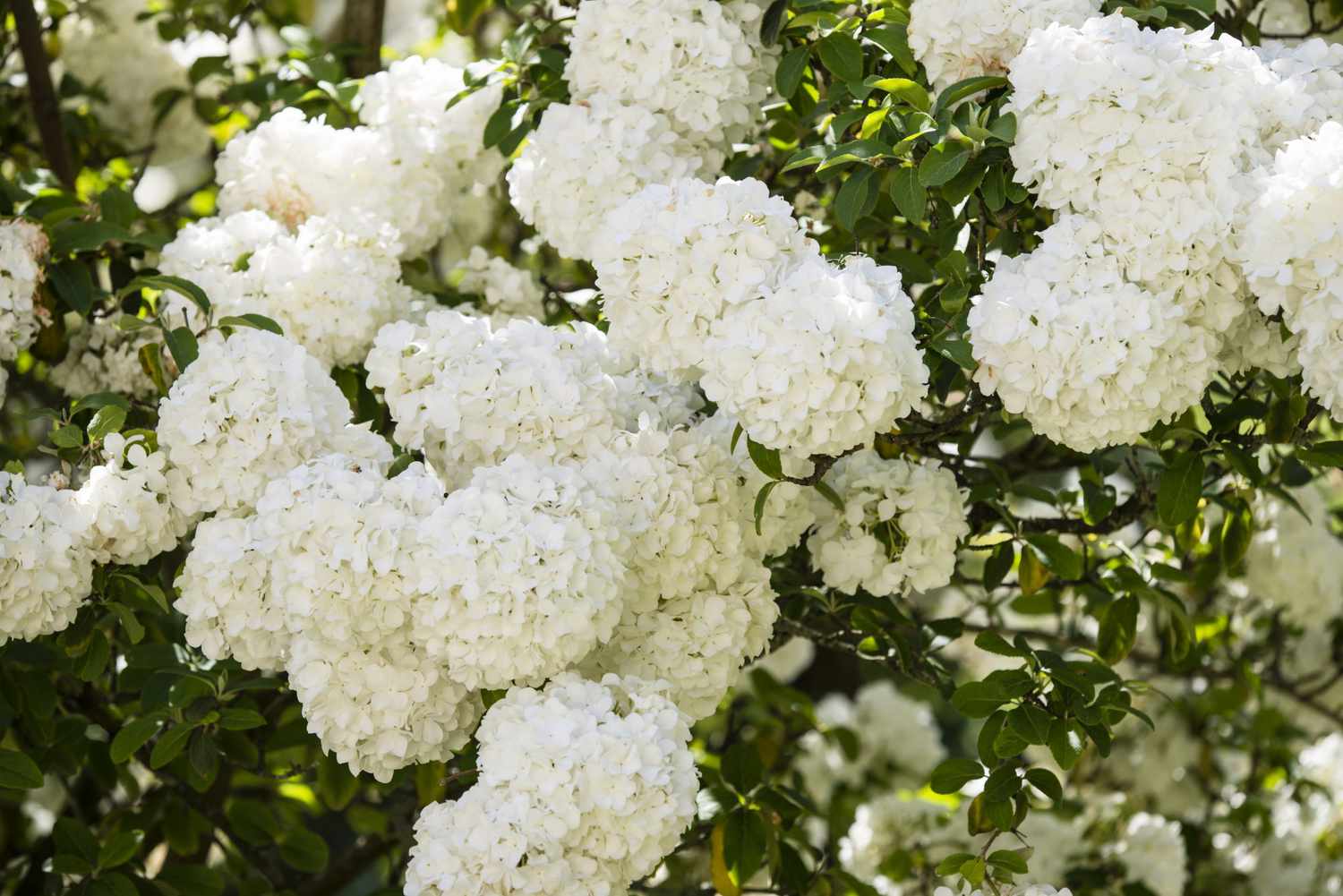
For a look-alike alternative to hydrangeas, try viburnum. This spring-flowering shrub has large, round clusters of flowers—that look similar to hydrangeas blooms—when in bloom. While hydrangeas blooms come in a wide variety of colors, viburnums flowers are white or pink. Before you choose a viburnum variety, check the maturity height, which can range from 2- to 30-feet high.
Botanical Name: Viburnum spp.
Sun Exposure: Full sun, Part shade
Soil Type: Organically-rich, Moist, Slightly acidic, Well draining
Learn about growing and caring for viburnum.
Loropetalum

Loropetalum, also called Chinese fringe flower is an evergreen shrub that blooms in whites or pinks and has a fast growing habit. This shrub can grow big, fast, so make sure to plan accordingly when choosing a variety to plant. Flowers can appear from late winter into early summer. Grow them as specimen plants, hedges, borders, or screens.
Botanical Name: Loropetalum chinense
Sun Exposure: Part shade
Soil Type: Organically-rich, Moist, Well draining
Winter Jasmine

To add a splash of color to your winter garden, consider winter jasmine, a vining shrub that grows 3- to 4-feet high with a 7-feet spread. Winter jasmine grows in USDA Zones 6-10, blooming mid-winter or early spring with hundreds of waxy, bright-yellow flowers. Plant winter jasmine in well-draining soil with full sun. This fast-growing, easy-to-care for vine can climb a trellis, spill over a retaining wall, or use as ground cover on a bank or hill.
Botanical Name: Jasminum nudiflorum
Sun Exposure: Full sun
Soil Type: Well draining, Moist
Learn more about growing and caring for winter jasmine.
«Knock Out» Roses
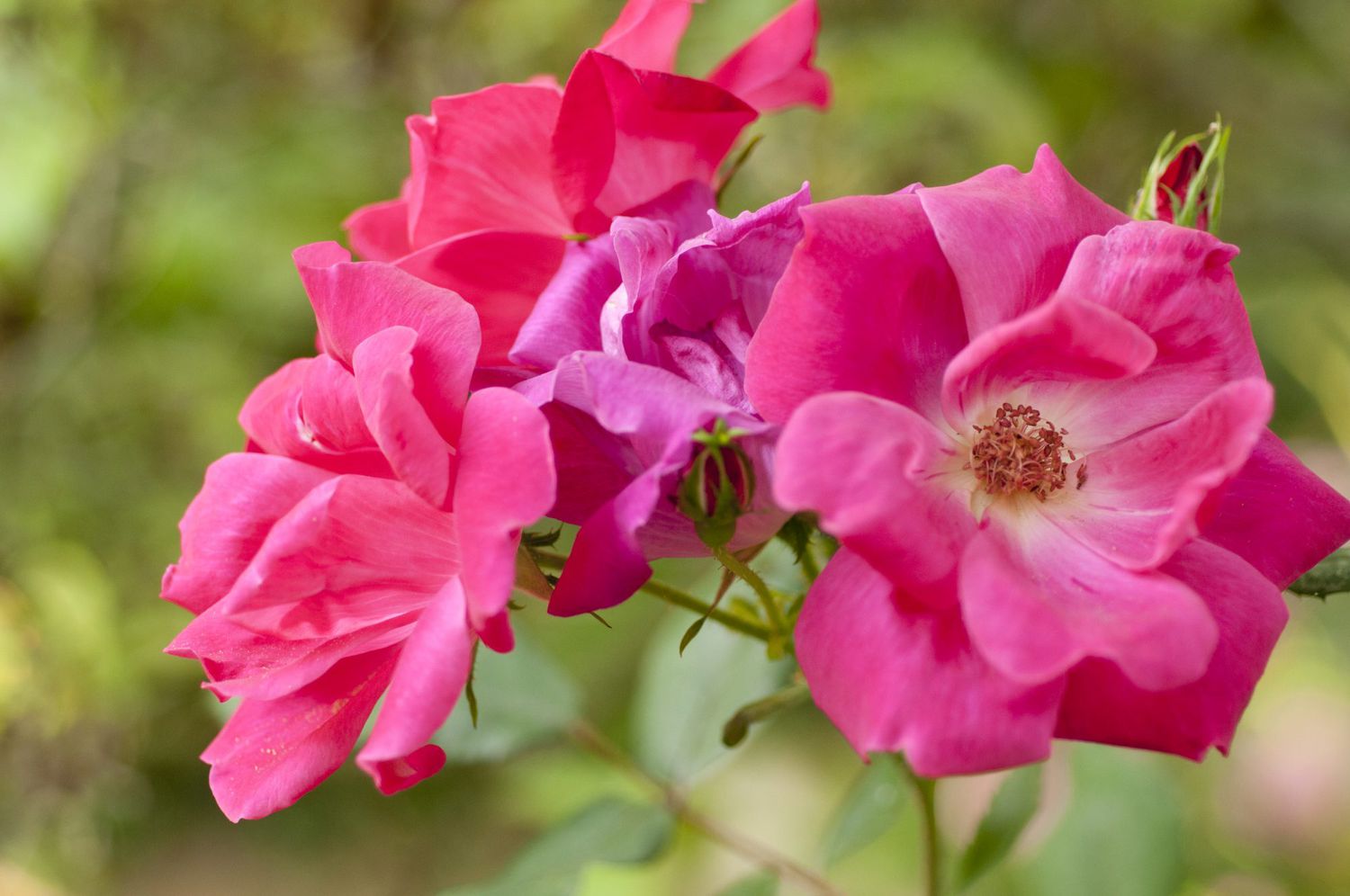
«Knock Out» roses are an easy-to-care-for shrub that provides rose blooms from spring through fall. «Knock Out» roses like full sun and well-draining soil. If well cared for, «Knock Out» roses are disease resistant to black spot, powdery mildew, and pests. (It can fall victim to rose rosette disease, a virus that kills the plant.) As self-cleaning roses, they don’t require deadheading. These roses bloom on new growth so, for a tidier plant, it can be pruned it almost anytime during the growing season.
Botanical Name: Rosa radrazz
Sun Exposure: Full sun
Soil Type: Well draining, Moist
Learn more about taking care of «Knock Out» roses.